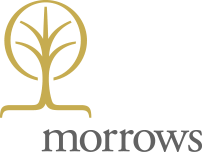The end of cheap interest rates? Fear of Missing Out, or FOMO, has been said to be a major driver of the house price growth experienced over the past year. With interest rates arguably now trending upwards, FOMO could easily be applied to borrowers seeking to lock in rates at the bottom of the interest rate cycle.
The Australian Bureau of Statistics has today announced the September quarter Headline CPI inflation rate at 3%. This compares with similarly high inflation rates across many advanced economies. However, the Annual Trimmed Mean rate, an indicator of underlying inflation closely monitored by the Reserve Bank, is at 2.1%, up from 1.6% in the June quarter. At present, the RBA considers the true rate of consumer price inflation to be considerably lower than the headline number due to the distorting one-off effects of the pandemic. Therefore, in the Bank’s view, the current high inflation rates may be only transitory, reflecting a move back to normal pricing levels as the economy gets back on track. However, what is interesting to note is that the Annual Trimmed Mean is now within the RBA’s 2% to 3% target range for the first time since 2015.
The Reserve Bank’s monthly meeting on 5 October again confirmed the official cash rate would remain at 0.10%. The Bank’s board expressed that whilst higher interest rates would have a beneficial dampening effect on house prices and credit growth, it would also potentially lead to job losses. Consequently, the board stated they would not increase the cash rate and would continue to maintain the rate at 0.10% until inflation is sustainably within their 2% to 3% target range, a situation that they predict will not occur until 2024.
It is significant, notwithstanding the RBA’s preference for supportive monetary conditions, that some banks have recently moved to introduce modest interest rate increases. Together with the Annual Trimmed Mean now falling within the RBA’s target range, these increases are perhaps signals to an end to the deeply discounted interest rates that Australians have enjoyed over recent times.
Only time will tell of course; however, what we do know now is that:
(a) some rates have already increased and,
(b) there does still remain some good opportunities to secure a historically cheap rate.
Arguably, there has never been a better time to refinance your current loan and secure cheaper fixed rates while they’re still available. Here’s how Morrows can help.
Refinancing and Lending Benefits
Morrows Lending Solutions have been given access to several loan and refinancing options that could prove beneficial when reviewing your options.
Offers available are designed to grant homeowners respite as well as priority access to value, in the form of cashback payments ranging from $1,000 up to $4,000 on eligible loans.
Even a rate change of 0.5% can affect your home loan repayments. For example, a 0.5% rate difference on a $500,000 home loan would equate to savings of $2,500 per year in interest or $208 per month.
How Refinancing Can Benefit You
In the COVID-19 economy, there can be real value in reassessing your loans and financing arrangements. By selecting a refinancing option now, you can access a greater level of financial security and flexibility before interest rates rise. Those who choose to refinance now can expect significant savings compared to variable interest rate products or fixed rate offerings that will begin to appear towards the end of the year. Changing to a more suitable option matched to the needs of your business and current circumstance can alleviate the financial burden.
If you have any questions regarding lending offers or Morrows Lending products, please contact Les Warden and the team at Morrows Lending.





